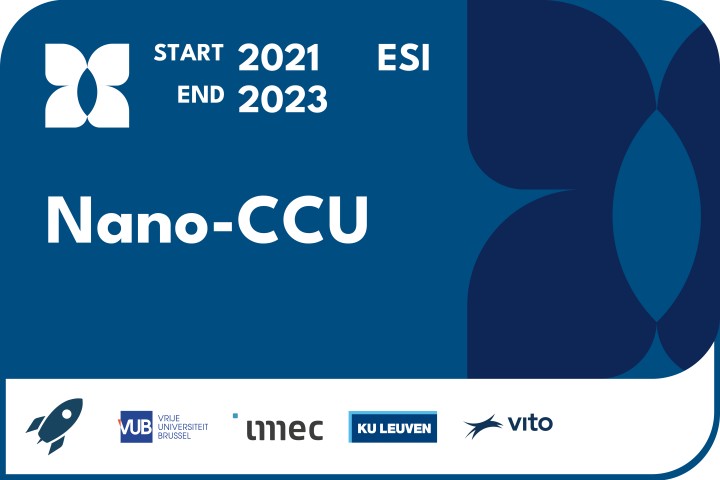Nano-CCU
Novel nanomaterials and nano-architectures for CO2 capture and utilization
Nano-CCU seeks to directly convert CO2 from flue gasses into a valuable platform molecule for the chemical industry.

Carbon Capture & Utilization
Over the last decades, industrial CO2 emissions have been reduced significantly. Yet, even today, industries still emit large quantities of CO2. To meet the 2050 climate goals, active removal of CO2 from industrial point sources will be necessary. To make such processes economically viable, the captured CO2 can be used as feedstock for the production of high-value chemical products. This approach is known as Carbon Capture & Utilization (CCU).
One-step process
Turning CO2 into useful chemical building blocks can be achieved through various means. One of the more efficient approaches consists of a one-step electrocatalytic conversion process, in which CO2 is directly converted into chemical building blocks in an electrolyser. This approach, however, requires sufficient throughput, selectivity and catalyst lifetime.
Multiple innovations
Nano-CCU aims to develop high-throughput electrolysers for CO2 capture and electrocatalytic conversion directly from gas or vapour at CO2 point sources. Specifically, multiple innovations will be pursued, including in the gas-diffusion-electrode architecture enabling fast all-vapor operation, as well as innovations in terms of alternative catalytic strategies.
Impact
By enabling further innovations in CCU technologies, Nano-CCU will allow Flemish industries to not only capture CO2 at point sources, but also to efficiently convert this CO2 into valuable chemical building blocks.